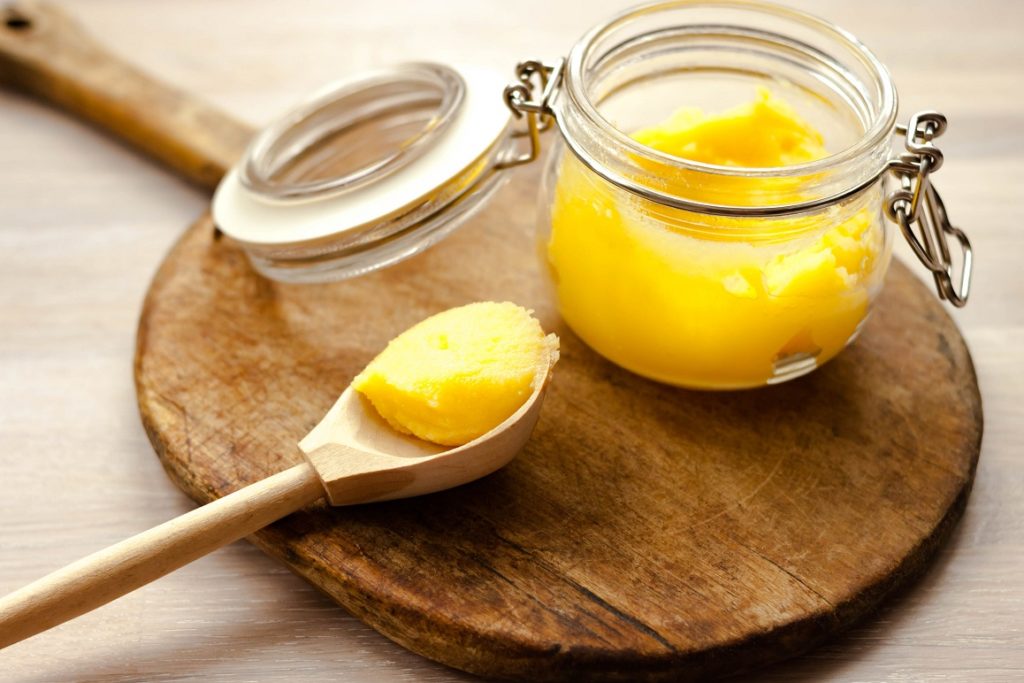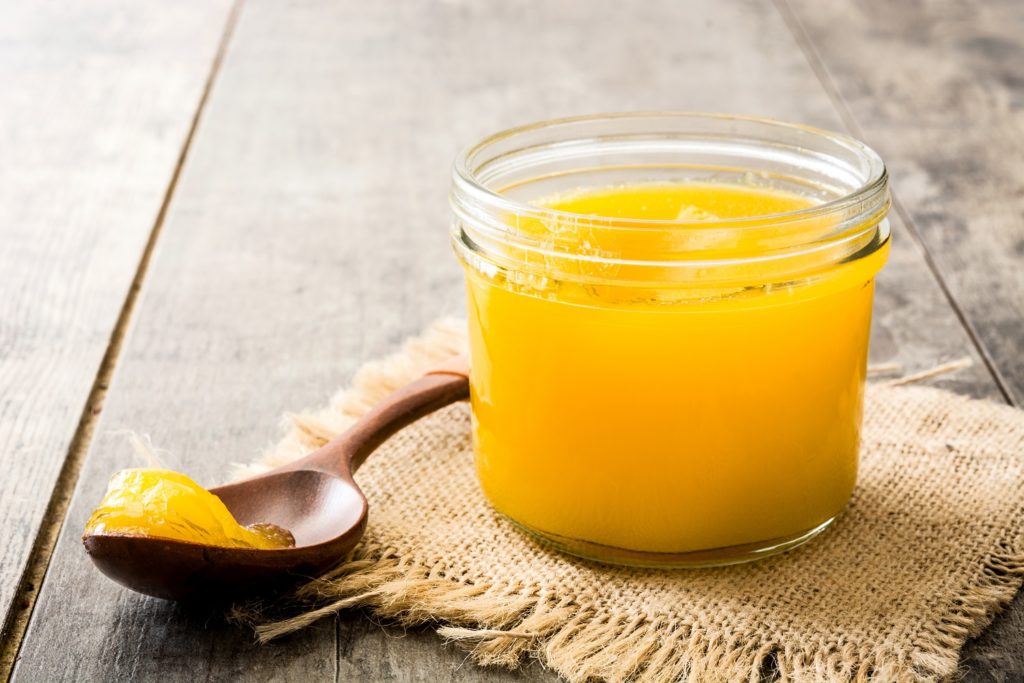
If you’re looking for a fun, simple, at-home project right about now, why not try your hand at making ghee?
Ghee is the result of cooking unsalted butter to separate the pure butterfat from the milk solids. It’s an ancient superfood that can be used for cooking, cleansing, and body care alike!
Making ghee at home is fun, easy, and fills the house with a rich, comforting aroma. Participating in such an ancient practice will help encourage feelings of groundedness and hope in these uncertain times.
Ghee for Spring Cleansing
If you’re like me, you get the urge to “lighten up” when Spring comes around. It feels like it’s time to slough off the stillness of Winter and get moving! Along with the rest of the herbally-inclined world, I delight in the green Spring herbs, such as Chickweed, Nettles, and Dandelion, that help cleanse the body and spirit of accumulated Winter wastes.
However, there is a place for BUTTER in all this Spring cleansing…well, purified butter anyway, also known as ghee!
Ghee, although you might not think it, can be an integral part of a Spring cleansing lifestyle. It is used in Ayurvedic cleansing regimens because it helps facilitate the elimination of toxins from the system. Ghee also moisturizes and protects the cells and internal organs from the waste products released by the lymph, liver, and other organs during the cleansing process.
Other Ghee Health Benefits:
- Nourishes the brain and nerves, promoting memory and concentration.
- Encourages healthy digestion by kindling agni, the digestive fire.
- Smooths wrinkles and moisturizes dry skin and eyes.
- Aids in joint mobility, pain, and flexibility.
- Contains CLA (coagulated linoleic acid), a cancer-fighting agent.
- Has a smoking point of 500+° F, which means that it can be used for high-heat cooking without breaking down in to carcinogenic free radicals.
- Contains heart-healthy fats and promotes cardiovascular health.
- Is anti-inflammatory and a rich source of antioxidants and Vitamins A, E, D, and K.

How To Make Ghee
You will need:
- 1 heavy-bottomed stainless steel pot
- 1 pound unsalted organic butter
- Clean glass jar
- Fine mesh strainer or cheesecloth (optional)
Place the butter in the pot over low heat. You will hear a hissing sound as the butter begins to bubble.
Cook gently for 15-20 minutes, watching carefully to make sure it doesn’t burn. You will notice a foam rising to the top and a thicker sediment falling to the bottom. Some folks like to gently scoop up and discard this foam with a spoon.
When the hissing and bubbling slow down and stop, and the color is clear and golden, the ghee is done.
Take it off the heat, let it settle for up to an hour, and then carefully and slowly pour into your glass jar.
Make sure the sediment of milk solids stays on the bottom of the pot. You can use cheesecloth or a fine mesh strainer if you are concerned.
Let the ghee solidify, and it’s ready to use!
Ghee can be kept indefinitely at room temperature. Anything that could cause spoilage has been removed. Always keep it covered and use a clean spoon or knife when dipping into it.
Note: You can use the milk solids at the bottom of the pot to make a tasty dessert. Put a little whole wheat flour and sugar in the pan, and stir on low heat until you form a sweet dough. You can also add cinnamon, cardamom, rose essence, etc. Roll the dough into balls, cool, and enjoy!
Take care, and enjoy lots of ghee!
In good health,
Nicole 
The post appeared first on .




